Venice. The name inspires wonder and envy from those who have never seen it, but if you start asking about the city with your seasoned traveler friends, they tend to give a dismissive sniff and say with upturned noses, “Oh Venice, it’s totally overrated. Such a tourist trap. And so overpriced. You’re better off spending your time in Florence.”
While there may be some legitimacy to some of the complaints (there are a hella lot of English-speaking tourists, the mosquitoes are wicked), I found Venice to be delightful and full of hidden charms. If you play your cards right, you can escape the heaving masses to areas blessedly free of foot traffic, with only the slow slap of waves to break the silence. It probably helped that I had a few Veneto locals to steer me around. (Valeria, we love you.)
Some basics: Venice was historically one of Italy’s most powerful city-states, and with the strength of its navy, the Venetian empire conquered and sacked various parts of Croatia, Constantinople, Greece and the Near East. You can see Byzantine and Muslim influences in the architecture even today. The city is well-known for its system of canals, which crisscross and connect the six sestiere (city wards) of Venice. At the front of each gondola, there is a piece of metal that includes six notches, one for each sestiere. If you look at a map of Venice, the islands form a fish-like shape.
Clockwise: Rialto Bridge, the oldest one spanning the Grand Canal; masks from Ca’ Macana, supplier for the film Eyes Wide Shut; selection of pastries and cookies from a Jewish bakery in the Venice ghetto; handcrafted Murano glass clowns
Like most visitors, we started off at the S. Lucia train station at the northern end of the island and slowly wound our way through each sestiere. Outside of the station, if you follow that first street east (Rio Tera’ Lista de Spagna), you will be blown away (or frightened) by the crowds of camera-toters, masked costume shops and street vendors hawking everything from classical marionettes to Venice knock-off t-shirts styled after Grand Theft Auto’s Sin City cover. Continue and cross the first canal, then take an immediate left and pause at the first sotoportego (covered passageway) on your right. This is an entrance to the Venice ghetto, where Jews were sequestered for about a thousand years. Suddenly, the rabble of the crowds has disappeared and you are surrounded by Hebrew signage, synagogues and yarmulke-topped bearded men. It’s like being transported to the Lower East Side. The word “ghetto” is derived from the Venetian dialect, and comes from “geto,” which means “to spread molten metal,” since the area was once home to a foundry. The ghetto was further memorialized in Shakespeare’s Merchant of Venice, where Jewish financier Shylock demanded “a pound for a pound” for unpaid debt.
Continuing south and following the bend of the Grand Canal, you will find the Rialto Bridge. Like Ponte Vecchio in Florence, the bridge is lined with merchants, hawkers and teems with tourists. The competition to take photographs from the center is fierce. Hold on tightly to your wallet.
There are currently four bridges that traverse the Grand Canal, but the Rialto, completed in 1591, is by far the oldest. The other three bridges date from the 19th century, with the fourth bridge (Ponte di Calatrava) opening in 2008, to much consternation and protest from residents. Instead, boats, water taxis and gondolas have historically used to cross the canal. Though the romanticism is arguably unbeatable, be prepared to fork over €80-100 euros for a 45 min gondola ride. Even Italians tend to reserve gondola rides for events like weddings or graduations. If you have the requisite chutzpah, Italian skills and looks, you can negotiate lower prices with a gondolier (one of my classmates was offered a €50 gondola ride). Or, you can stand next to the canals and live vicariously as Japanese tourists ensconced in a gondola are serenaded by a robust, accordion-playing gondolier.
In case you think the gondoliers are bilking tourists for all the cash they’ve got, consider that gondoliers only work for half the year during the summer months. Also, the barriers to entry for the industry are high. The number of working gondolas is closely limited by the Venetian gondoliers guild, and you must graduate from gondolier school with the ability to row while fending off traffic in tight canals, and hold a solid knowledge of Venetian landmarks, the English language and Italian sailing law. This article from an Englishman who took a crash course in gondoliering sums up the experience neatly by writing, “My smooth but muscular strokes left her weak with admiration. My passionate baritone on O Sole Mio melted her frigid heart. My jaunty, red-ribboned hat brought a coy but unmistakably willing smile to her lips. Then, obviously, a big bloke splashed water in my face and I woke from my daydream to the bitter reality of life in gondolier school – which was two grumpy men barking at me in phrases I didn’t understand, but knew instinctively to be uncomplimentary.”
The obstacles are not so insurmountable that women can’t participate though–for the first time in over 900 years, a female gondolier was appointed just two weeks ago in mid-August. She follows in the footsteps of her father, a retired gondolier, and joins Venice’s previously all-male 425 member gondolier guild. To her naysayers who question whether women are strong enough to power a gondola, Giorgia Boscolo retorts, “Childbirth is more difficult.”
Clockwise: raised sidewalks on the flooded streets of Venice; one of Venice’s many picturesque canals, notice the house on the left can only be accessed by boat; Venice’s Grand Canal by night; view of San Marco square from Dorsoduro
Back in Venice, the day had begun with a torrential downpour, and though the skies were now perfectly clear, the low-lying streets were covered with floodwaters. When we got to San Marco square, I was dismayed to see that the piazza held several inches of water, though children and people armed with galoshes and plastic bags were happily splashing about. Navigating the city for the next few hours was tricky, as we were blocked again and again by flooded streets. Generally, acqua alta is a problem only in the winter months, but the combination of climate change and Venice’s slow sinking have further exacerbated the problem in recent years.
As night falls and your feet begin to ache, head back towards the Rialto bridge for sustenance. Unlike aperitivo elsewhere in Italy, where you are provided with snacks with the price of your drink, here the convention is to sell drinks and buy tapas-style snacks separately. Typically, this means various types of miniature sandwiches, but you can also grab items like arancini (fried risotto ball), tripe and tuna meatballs. At Al Mercà, you can mingle with the crowd of locals and students while holding a glass of prosecco and a baccalà (salted codfish) sandwich (€1.50). Then head around the corner to Ostaria Al Diavolo e l’Aquasanta (the devil and holy water). This low-key restaurant serves traditional Venetian fare and seafood, like fresh sardines, spaghetti with squid ink and bigoi in salsa (pasta with anchovy and onion sauce).
As it so happens, nighttime is one of the best times to visit Venice. The city clears out, temperatures drop and you are left to absorb the twinkling lights on the Grand Canal at your own pace. In the winter, Venice takes on an even more enigmatic air, as thick fog rolls in and out of the lagoon.
Some day, I’ll be back for carnival season.
Update: The NYT has just published an article on drinking spritz in Venice, and Al Mercà is featured at the top!



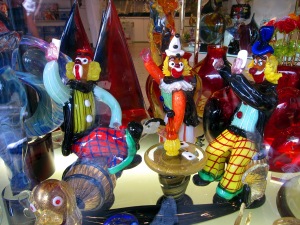
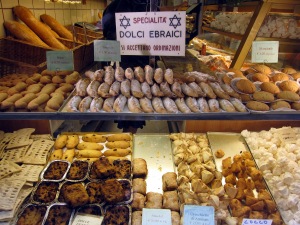
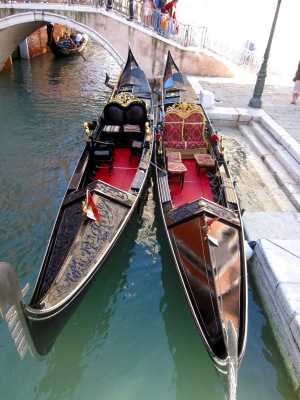
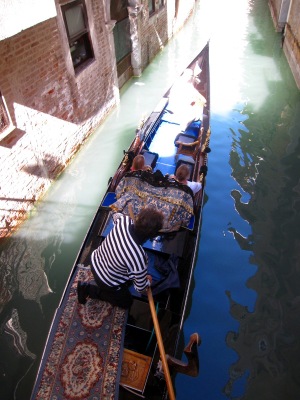
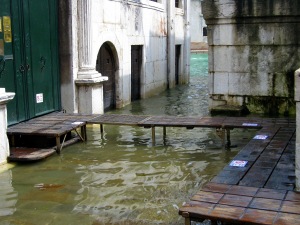
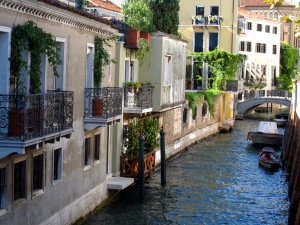

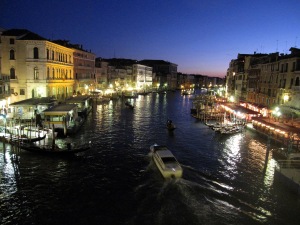
Very good post on Venezia, a jewel of a city. You seemed to have captured its unique mood in your words and pictures. Thanks for the visit, I enjoyed it 🙂
Thanks, I find that people are often blasé about the city, which is saddening!
Great post! One of the better blogs I enjoy following and a Don Genova fan too.
All the best, from bob in Vancouver, Canada!
Fantastic! Don gave me a lot of good advice when I started this program, which was much appreciated. One of these days I need to make it out to Vancouver!